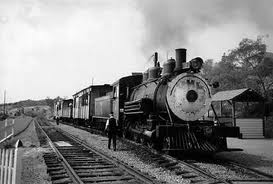
In 1862, four landmark pieces of federal legislation were passed that fundamentally shaped the society and culture of the Great Plains as we know it today.
Those pieces of legislation -- the Homestead Act, the Morrill Act, the Pacific Railroad Act, and the act that established the U.S. Department of Agriculture -- will be recognized by a symposium hosted in March 2012 by the Center for Great Plains Studies in collaboration with Homestead National Monument of America.
The theme of the symposium is "1862 and the Making of the Great Plains: A Year of Sesquicentennials." In addition to the landmark legislation, the symposium will examine the bitter 1862 Dakota Conflict in Minnesota that also helped shape today's Great Plains.
Symposium co-chairs Richard Edwards and Mark Engler said the symposium will identify and evaluate the importance of these laws and events, including their role in shaping the Great Plains. It will explore a wide range of questions, including:
* How did the federal vision for the region drive regional development in some directions while foreclosing it in others?
* How did these historic laws and the unfolding policies that implemented them shape the culture, economy, environment, democracy, history, and politics of the Great Plains?
* How do they continue to have relevance today?
Edwards is professor of economics and fellow of the Center for Great Plains at UNL, and Engler is superintendent of Homestead National Monument of America.
One consequence of the 1862 legislation was land re-distribution: the federal government granted public land to prospective farmers, to land-grant colleges and public schools, and to railroad corporations. The Cooperative Extension Service and the research programs of the Department of Agriculture helped shape the kind of agriculture practiced in the Great Plains.
The completion of the trans-continental railroad reduced coast-to-coast travel time, while the Union Pacific corporation pioneered new forms of corporate organization, finance and management control that shaped national business development.
Cheated by traders and denied protection and food by Indian agents, angry Dakotas led by Little Crow revolted in 1862, killing hundreds of Minnesotans. This conflict spread to include the Lakotas and Yanktonais, as U.S. Army campaigns provoked additional hostilities. This bitter encounter destroyed trust and destabilized cooperative relations between Indians and whites. The Dakota Conflict would help determine the U.S. government's approach to American Indian relations for decades to come.
For more information about the conference, call 402-472-3082 or visit http://www.unl.edu/plains for a call for papers.
- Linda Ratcliffe
More details at: http://go.unl.edu/pmc